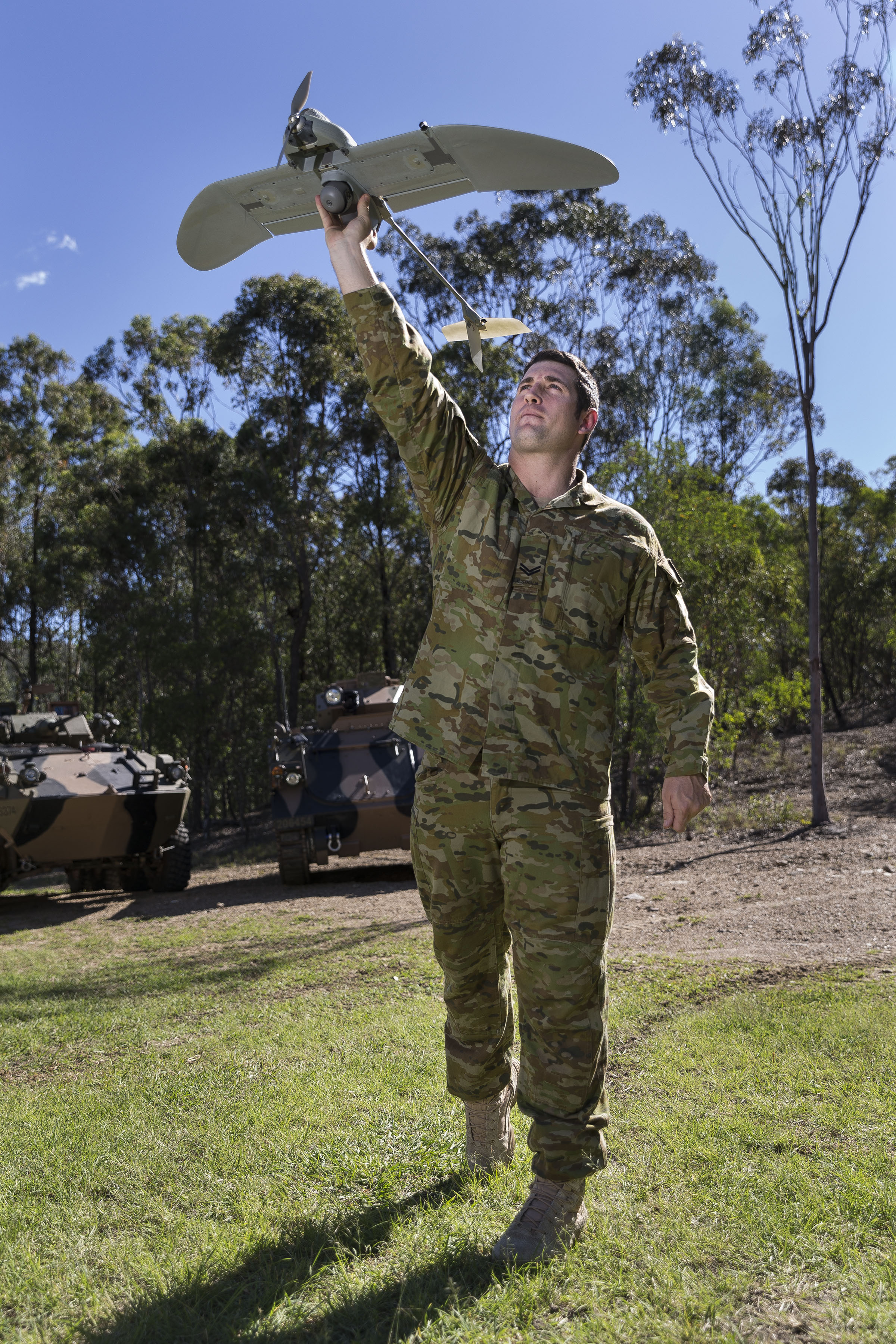Defence Force to pay AU$101m for compact field drones


Australian Army soldier prepares to launch a Wasp AE vehicle
The federal government has announced it will be investing AU$101 million into small unmanned aerial systems for use by the Australian Defence Force (ADF).
The funding for the drone fleet comes under tranche one of a two-tranche program, with Minister for Defence Marise Payne commenting that Defence chose Wasp AE to meet an immediate need.
The second tranche will upgrade the Wasp AE vehicles or acquire a replacement system within the next 10 years.
In a statement, Payne said the systems were small enough to be carried, assembled, and used by one person.
The Wasp AE vehicles will be acquired by Defence through Canberra-based company XTEK and the drones will be modified with Australian "content" with help from Sentient in Melbourne and Mediaware in Canberra.
According to the government, the acquisition of the drones will cost approximately AU$11 million, plus up to AU$4 million each year for sustainment, which will mostly be provided by XTEK.
Housed in a fibreglass composite, Payne said the Wasp AE vehicles allow the soldier to see "over the hill, around the corner, and down the road".
"Similar systems, including the Skylark, have been used by our soldiers in Afghanistan and Iraq with tremendous success," she added. "They provide our military with a faster and better understanding of the battlefield than our adversaries."
The Australian government touted drone use as a "proven capability" used by militaries around the world, including with the US Marine Corps.
The federal government handed over AU$5.7 million to universities in Australia last week, aimed at developing technologies to be used by the ADF.
The funding will be invested into nine "transformational" technology areas, highlighted in the 2016 Defence White Paper, including AU$2 million for the development of autonomous systems; AU$960,000 towards multidisciplinary material sciences; AU$780,000 for the advancement of sensors and directed energy capabilities; AU$710,000 to enhance cybersecurity defence; and AU$490,000 for the development of quantum technologies.
The funding was allocated under the AU$730 million Next Generation Technologies Fund, launched in March in an effort to thwart emerging attack methods via "creative solutions" devised by industry and academia.
As of September last year, commercial operators of "very small remotely piloted aircraft" in Australia were no longer required to obtain a number of regulatory approvals to fly their unmanned vehicles under new regulations approved by the Australian government five months prior.
Under the changes, the government also gave the directive to drop the terms "drone" and "unmanned aerial vehicle" and replace them with "remotely piloted aircraft" (RPA) to align itself with International Civil Aviation Organization terminology.
The changes apply to RPA used in commercial operations weighing less than 2 kilograms maximum take-off weight. Under the new rules, drone operators must also notify the Australian Civil Aviation Safety Authority that they intend to fly their aircraft and adhere to a set of standard operating conditions, which include flying only during the day within a visual line of sight; below 120 metres; more than 30 metres away from other people; more than 5.5 kilometres from controlled aerodromes; and not near emergency situations.